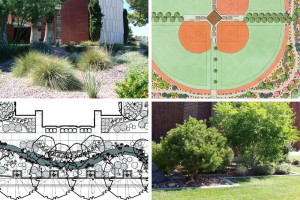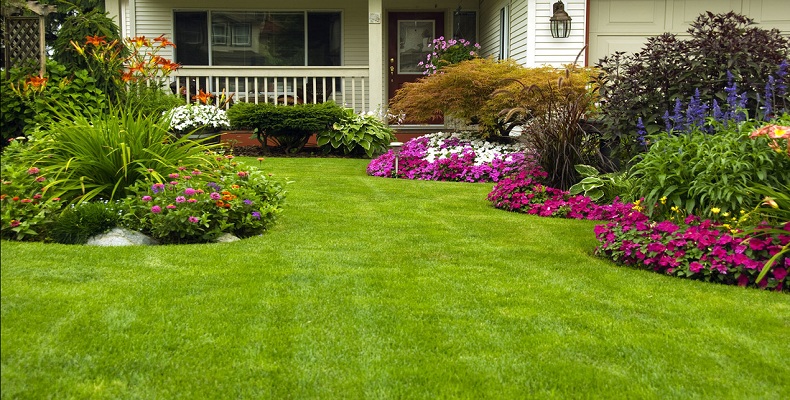What Does Landscape Design Mean?
Table of ContentsThe Basic Principles Of Landscape Design The smart Trick of Landscape Design That Nobody is DiscussingThe Of Landscape DesignUnknown Facts About Landscape Design
A lawn can normally be split into three locations: public (the front yard), exclusive (the back yard), and solution (typically the side backyard). The location of task locations depends mainly on the kind of area, the size of space needed, the kind of task, and the wanted proximity to various other tasks and structures.
The outdoors wall of your home usually works as the initial wall surface or beginning point of an outside space. Inappropriate usages ought to be divided, and related tasks, such as cooking and eating, ought to be assembled to make the backyard a lot more reliable and delightful. When utilizing hardscape to develop spaces, utilize building and construction material comparable to that made use of in your house for continuity from your home into the yard.
Connected spaces. Credit Score: Gail Hansen, UF/IFAS Using similar hardscape attributes and duplicating plants pulls the eye around the garden. Crucial factors in the process can be highlighted with growings or features that draw focus and encourage activity in a particular direction. Relocating along the path takes an individual from one area to the following and allows the customer to have a selection of experiences.
From a design viewpoint, plant products have three major features in the landscape: aesthetic, structural and practical. Aesthetically, plants develop a visually positive atmosphere and structurally plants organize and specify areas.
The Best Strategy To Use For Landscape Design
For emotional convenience plants are utilized as physical or implied barriers for personal privacy and safety and security. Physical obstacles block both the sight and access to a room and include fencings, walls and plant bushes. Landscape Design. Implied obstacles, normally low expanding plants, block access but not the sight (Figure 9). Various other features of plants include cleaning the air, stopping disintegration and soil loss, keeping wetness in the soil, and returning raw material to the soil.
Physical and suggested barriers. Credit History: Gail Hansen, UF/IFAS For these factors, the sorts of plants to be made use of (such as trees, shrubs, or groundcovers) ought to be selected in the very early phases of planning. Plant types are picked for their practical capacities to make sure that their future purpose and called for room can be taken into consideration at the same time.
The overhanging plane, the upright airplane and the ground aircraft need to all be taken into consideration to produce enclosure. Once the form of a plant bed has actually been established, the plants ought to be massed (grouped) and layered to accomplish aesthetic unity and the wanted quantity of click for source enclosure. The size of a plant mass will certainly rely on the total size of the yard, the size of the individual plants in the mass, and the emphasis or impact desired from the plant material.
Each plant mass is in front of, behind, or next to, another mass. Credit Score: Gail Hansen, UF/IFAS Duplicating plants within a mass and duplicating masses with comparable plants connects the garden with each other. The specific plant attributes should be considered to successfully layer and mass plants.
Rumored Buzz on Landscape Design
All plant compositions begin with the main structure plants, the big, mainly evergreen history plants-such as the trees and big shrubs. These plants different or enframe areas, regulate the size of the space, and offer the starting point for selecting the suitable characteristics of the 2nd layer, midground plants, for massing and infill.
Crucial factors in the garden ought to be highlighted by the use of distinct plants, unique frameworks, or garden accessories. Noting limits or entrances to areas can be done with gates, arbors, and steps, or via the use of distinct and vibrant plants. The kind and/or design motif of the garden will typically help determine the important factors and just how they should be highlighted.
Other important areas in the backyard are focal points, which is used to visually organize a landscaped area. The sort of centerpiece commonly depends on the checking out viewpoint. Various perspectives or viewpoints can expose various structures in the landscape that might need a selection of focal points. Contrasting texture, shape, size and color will catch and hold the eye.
Landscape Design Things To Know Before You Buy
Figure 13. Plant types. Credit Score: Gail Hansen, UF/IFAS After type, texture is the following leading function of a plant; crude, medium and great appearances can be made use of reference for contrast and focus in the landscape. Form and texture both trump color in the yard for many of the year. However, Click This Link throughout particular periods, color will be one of the most recognizable feature of the garden.


The positive scent of plants, the audio of wind in the trees, the noise and texture of water, and the colors and structures of sculptures, pots and yard furniture all include in the experience of the yard. One detail that is usually ignored is the effect of light on the aesthetics of the plants.
The entire garden adjustments in feature and look throughout the day, and the course of a year, as the light and temperature adjustment from morning to evening and period to season. Plant option have to take into consideration a plant's development rate, its mature size and form, and the upkeep it will need.
It is important to recognize the eventual fully grown dimension of plants so they can be put in the right place and spaced appropriately when they are installed. Offering plants area to expand is an obstacle due to the fact that the typical mature dimension is usually based on optimum growing conditions and the ecological problems of a site might trigger a plant to expand bigger or remain smaller sized.